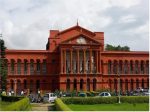
Gen-next robots powered by light-sensitive muscle developed
PTI, Sep 18, 2019, 12:25 PM IST

Washington: Researchers have developed a new generation of two-tailed robots that are driven by light-activated muscule tissue — an advance that brings engineers a step closer to building autonomous biobots.
Researchers led by Taher Saif of the University of Illinois in the US, designed a new generation of two-tailed bots powered by skeletal muscle tissue that was stimulated by on-board motor neurons.
The neurons upon exposure to light, fired to move the muscles, the study, published in the journal PNAS, noted.
“We applied an optogenetic neuron cell culture, derived from mouse stem cells, adjacent to the muscle tissue,” Saif said.
The neurons, he added, advanced towards the muscle and formed neuromuscular junctions, and the swimmer assembled on its own.
After ensuring that the neuromuscular tissue worked well with their synthetic biobot skeletons, the team optimised the bot’s functions.
“We used computational models, led by mechanical science and engineering professor Mattia Gazzola, to determine which physical attributes would lead to the fastest and most efficient swimming,” Saif said.
He added that the researchers looked at variations in the number of tails and tail lengths for finding the most efficient design of the bot.
“Given the fact that biological actuators, or biobots, are not as mature as other technologies, they are unable to produce large forces. This makes their movement hard to control,” Gazzola, also from University of Illinois, said.
He added that it was very important to carefully design the scaffold the biobots grew around and interacted with to make the most out of the technology and achieve locomotive functions.
“The computer simulations we run play a critical role in this task as we can span a number of possible designs and select only the most promising ones for testing in real life,” Gazzola said.
Saif added that the ability to drive muscle activity with neurons is an advance that paves the way for further integration of neural units within biohybrid systems.
“Given our understanding of neural control in animals, it may be possible to move forward with biohybrid neuromuscular design by using a hierarchical organization of neural networks,” Saif added.
Udayavani is now on Telegram. Click here to join our channel and stay updated with the latest news.
Top News
Related Articles More

Don’t blame Dubai’s freak rain on cloud seeding

ISRO Gears Up to Test Critical Parachute Safety of Gaganyaan

Indian students bag NASA awards for Human Exploration Rover Challenge

‘Mastering the Data Paradox’: Book uncovers pivotal role of data in AI age

Bitcoin’s latest ‘halving’ has arrived. Here’s what you need to know
MUST WATCH
Latest Additions

Siddaramaiah meets Neha Hiremath’s family, offers condolences

Lok Sabha Polls 2024: Bengaluru bigwigs cast votes early

LS Elections 2024: Brisk voting in Udupi & Dakshina Kannada; EVM snag delays polling in some booths

IPL 2024: I’ll sleep better, says Faf du Plessis

IndiGo, Air India plan to purchase up to 170 wide-body planes in little over a year
























